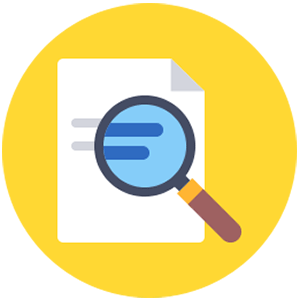
Common Warning Signs/Red Flags for Learning Disabilities
What is a Transdisciplinary Approach?
A transdisciplinary approach to treatment integrates expertise and experience from several different and related professional disciplines. Each professional provides input, data and concepts to maximize each client’s individual treatment gains. The interwoven nature of TMC treatment programs broaden the skill sets of each therapist due to their exposure and heavy interaction with others outside their discipline, but it also allows the team of professionals to work together to reinforce and maintain goals not normally monitored. With a truly transdisciplinary team, the typical boundaries of each professional discipline tend to disappear. Instead, each professional develops a working knowledge of their co-workers’ areas of expertise and discipline. Ultimately, the common goal – exceptional treatment progress – is achieved through the collaborative, transdisciplinary team.
Is there a tool to give self-assessments?
Learning difficulties do not go away with age or time. Children do not “outgrow” learning difficulties. Without the proper treatment, children with learning difficulties can grow up to become adults with learning difficulties or diagnosed learning disabilities. Only the proper treatment can change their weaker learning or academic skills into strengths; commonly our clients have strengths in other skills too. Our unique transdisciplinary team and treatment program can dramatically improve learning, language, sensory processing, attention, behavior and academic skills. Our individually-tailored treatment programs are highly successful regardless of whether our client is 4 years old or 78 years old. New scientific evidence supports that the human brain is able to develop new skills or improve weak abilities into strengths at any age.
Common Warning Signs/Red Flags for Learning Disabilities
Note: These warning signs vary with each child and all signs may not be present. A very strong warning sign is any family history of learning disabilities/difficulty – they are genetic.
Speaking
Trouble with articulation, persistently mispronounces words. Trouble using correct verb tenses, plurals, or pronouns
Listening
Trouble rhyming, playing sound or word games
Word finding
Knows colors, but cannot name them when asked
Sequencing
Difficulty telling an event or story in order or sequence
Auditory memory
Difficulty remembering multiple-step directions
Fine motor skills
Difficulty cutting with scissors, tying shoes, or blowing nose
Uncoordinated
Clumsy, messy eater, poor at skipping, trouble learning motor skills
Sensory processing
Overreacts to or avoids sounds, touch, fabrics, foods, smells or lights
Speaking
Persistently mispronounces words, and slow word finding when talking
Phonological Awareness
Misses or changes sounds in words that are heard, spoken, or read
Reading and Spelling
Difficulty learning to sound-out words for reading and spelling. Relies on sight words, reading is slow, effortful, & unpleasant
Sequencing
Errors when reading – e.g. says “was” for saw; telling an event in order
Auditory Memory
Difficulty following directions, learning phone number
Handwriting
Awkward pencil grip, presses too hard on paper when writing, hand fatigues
Focus
Trouble concentrating at home and school; wears out before a task is done
Self-esteem
Repeated difficulties or frustrations lead to lower self-esteem
Speaking
Persistently mispronounces words, and slow word finding when talking
Phonological Awareness
Misses or changes sounds in words that are heard, spoken, or read
Reading
Slow; avoids it; relies on sight words; guesses and makes successs
Spelling
Poor spelling, poor memory after spelling test, mixes up letters in words
Writing
Avoids it; written sentences are short and poorly organized or ordered
Auditory memory
Difficulty following or remembering multiple-step directions. Difficulty remembering alphabet for phonebook or dictionary use
Handwriting
Effortful, messy, awkward grip, presses too hard on paper with pencil
Focus
Trouble concentrating; wears out before task is done; loses place on a page
Self-esteem
Increasing frustration and poor self-esteem
Language Expression
Difficulty putting ideas in words and sequencing them appropriately
Foreign Language
Trouble learning other languages, e.g. Spanish, French
Achievement Tests
Much better at math than reading, poor performance on FCAT
